Palawan Island is one of the world’s favorite tourist destinations, known for its natural beauty, biological diversity, and historical richness. Located in the western part of the Philippines, this mysterious island is a veritable paradise with its unique beaches, crystal-clear lagoons, tropical forests, and incredible marine life.
Palawan offers a variety of experiences for both adventure-seeking travelers and those in search of tranquility. Natural heritage sites like the natural lagoons in El Nido, underground rivers in Puerto Princesa, and the Tubbataha Reef entice those looking to explore the island’s unparalleled beauty.
In this article, we will embark on a journey into the captivating story of Palawan Island. From its location and how to get there to its history, cultural riches, and sustainable tourism efforts, we will explore the unique texture of Palawan with the help of an island guide. Are you ready to step into the enchanting world of Palawan Island?
Table of Contents
Where? The Geographic Location of Palawan Island
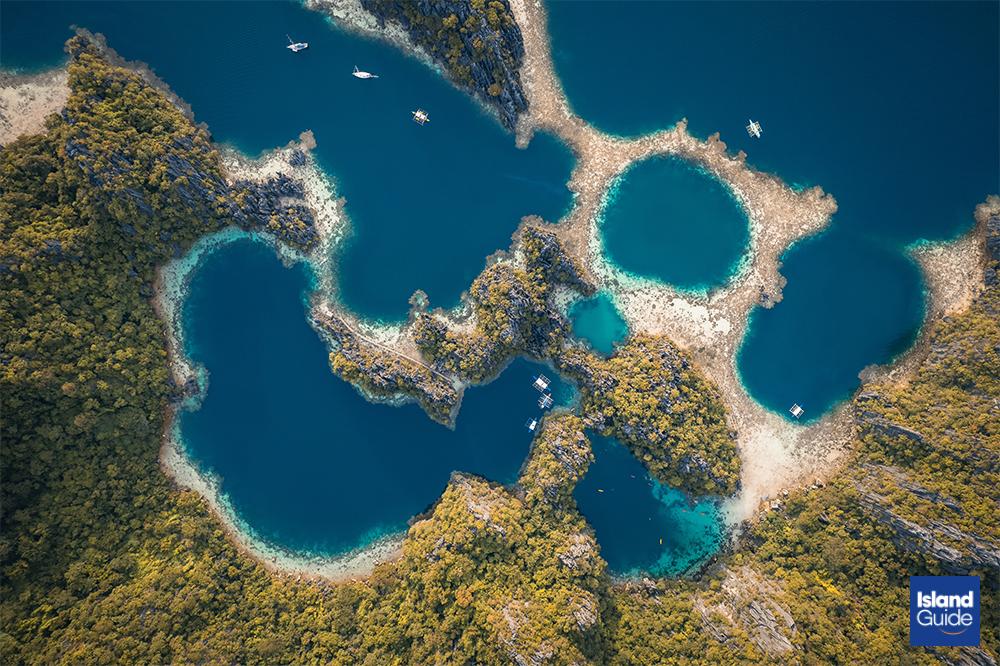
Palawan Island is located in the western part of the Philippines, along the northern coast of the Philippine Sea. Its geographic location is influenced by the vast waters surrounding the island and its unique natural formations. Palawan is the longest island in Asia and constitutes a significant part of the Philippines, which consists of a total of 7,641 islands.
To the north of the island lies the South China Sea, to the east is the Sulu Sea, and to the west is the Celebes Sea, surrounding Palawan with great marine diversity and ecosystems. Its geographical location has contributed to the development of unique climate conditions on the island and the growth of tropical vegetation. Furthermore, Palawan’s location has made it open to interactions with different cultures throughout history, shaping the island’s rich cultural fabric.
Palawan Island, due to its geographical location, stands out as a unique destination with both natural beauty and historical heritage. This geographical location emphasizes the island’s distinctive character and the charm that captivates visitors from all around the world.
How to Get There? Transportation Guide to Palawan Island
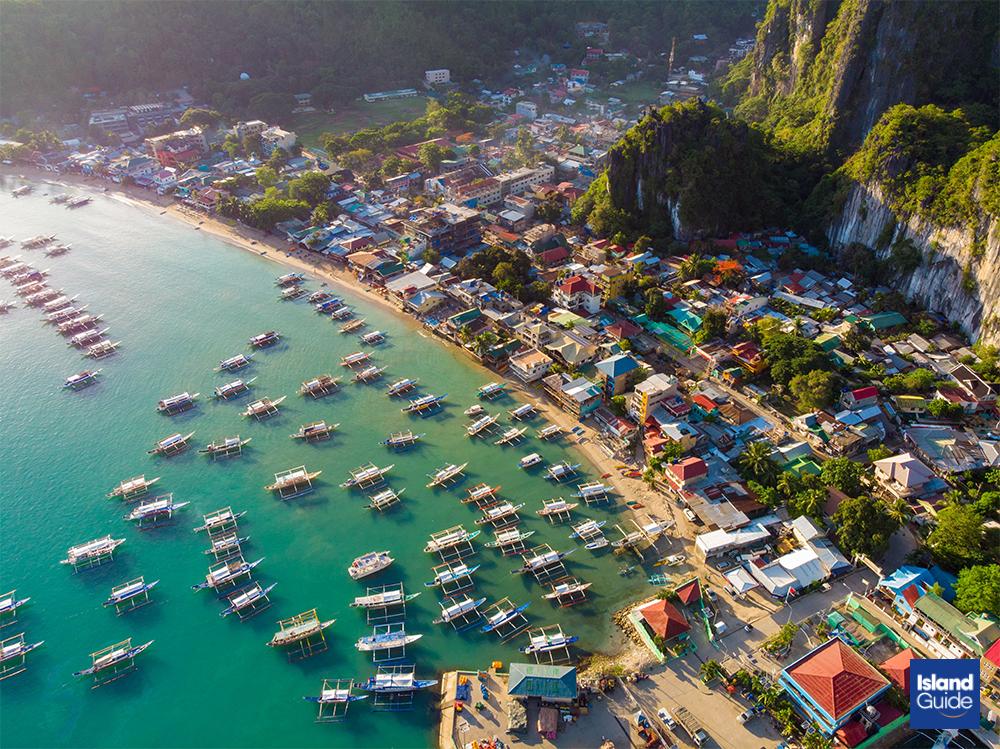
Getting to Palawan Island to discover its unique beauty is quite easy. Here are some essential details on how to reach Palawan:
By Air
Puerto Princesa Airport: Puerto Princesa, the capital of Palawan, has direct flights from major airports in the Philippines, including Manila. Additionally, connecting flights can be arranged from international airports.
El Nido and Coron: To reach other popular regions of the island, such as El Nido and Coron, you can either take domestic flights from Puerto Princesa or opt for sea transport.
By Sea
El Nido and Coron: You can reach tourist hotspots like El Nido and Coron from Puerto Princesa by taking ferries or private boat tours. This option is excellent for those who want to enjoy the sea.
Local Transportation
Island-Wide Transportation: Palawan Island offers various local transportation options, including local buses, taxis, and tricycles (three-wheeled transportation), making it convenient for visitors to explore different parts of the island.
By choosing the most suitable method of transportation, you can start exploring the unique beauty of Palawan Island. The availability of air, sea, and local transportation options makes it easy for visitors to access different parts of the island.
History: The Past and Cultural Heritage of Palawan Island

Palawan Island hosts a rich history and cultural heritage. The island’s history encompasses various elements, including the interaction of different civilizations, explorations, and the preservation of natural beauty.
Early Periods
Palawan’s history dates back to prehistoric times. Archaeological findings suggest that the island’s first inhabitants were seafarers and hunter-gatherer communities.
Spanish Colonization
In the 16th century, Spanish explorers discovered Palawan and incorporated it into the Spanish Empire. With the establishment of Puerto Princesa in the 17th century, Spanish influence shaped the island’s culture and architecture.
World War II
Palawan Island came under Japanese occupation during World War II. The Palawan Prison Camp in Puerto Princesa is known as a significant historical site bearing the scars of the war.
Natural Conservation Efforts
Palawan is also renowned for its efforts in conserving its natural riches. The region, declared as the Palawan Biosphere Reserve in 1992, was established to preserve biodiversity and promote sustainable tourism practices.
UNESCO World Heritage
Tubbataha Reef is an important area in Palawan that is listed on the UNESCO World Heritage List. The coral reef, along with its rich marine life, reflects the natural heritage of the island.
The history, cultural heritage, and natural beauty of Palawan Island offer visitors a journey through the island’s past to the present. Events throughout history have shaped the character of the island and brought out the unique elements that make Palawan special.
Natural Beauties and Structures: Paradise Corners of Palawan Island
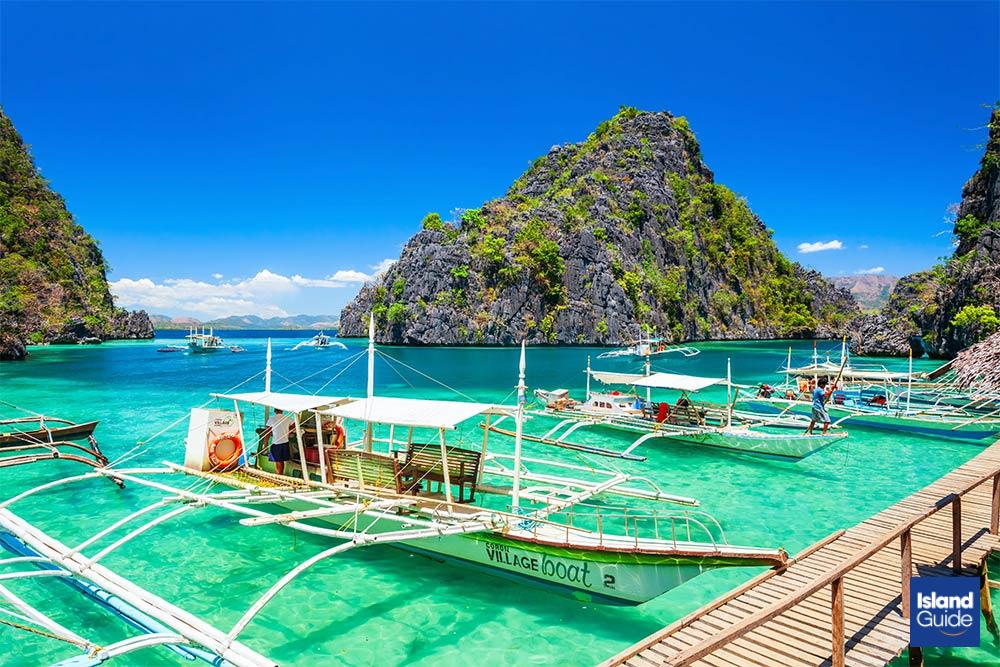
Palawan Island is a destination known for its unique natural beauty and architectural structures. The island’s serene bays, crystal-clear lagoons, and historical buildings offer visitors an unforgettable experience.
- El Nido’s Lagoons: El Nido, located in the north of Palawan, is famous for its natural lagoons. Hidden among karst rock formations, these lagoons are like hidden corners of paradise with their crystal-clear blue waters and stunning natural landscapes.
- Puerto Princesa’s Underground Rivers: Puerto Princesa is famous for its underground rivers, recognized as one of the New Seven Wonders of Nature. Flowing from the St. Paul Mountains, these rivers provide an opportunity for exploring vast cave systems.
- Tubbataha Reef: Tubbataha Reef, listed on the UNESCO World Heritage List, is one of Palawan’s natural treasures. It is renowned for its coral reefs, colorful corals, and diverse marine life-filled waters.
- Japanese Warships of Coron: Coron, located in the northwest of the island, is where you can discover the wrecks of Japanese warships. These wrecks hold a special appeal for divers interested in exploring underwater historical heritage.
- Iwahig Prison: Iwahig Prison, one of Palawan’s historical landmarks, functions as an open-air prison. Inmates engage in activities like farming and crafts, and it also serves as an outdoor museum open to visitors.
Palawan Island dazzles with its natural beauty and simultaneously captivates visitors with its historical and cultural heritage. Natural wonders like El Nido’s lagoons, Puerto Princesa’s underground rivers, and the Tubbataha Reef are significant elements that make up the island’s unique essence.
The Significance of Palawan: A Natural and Cultural Treasure
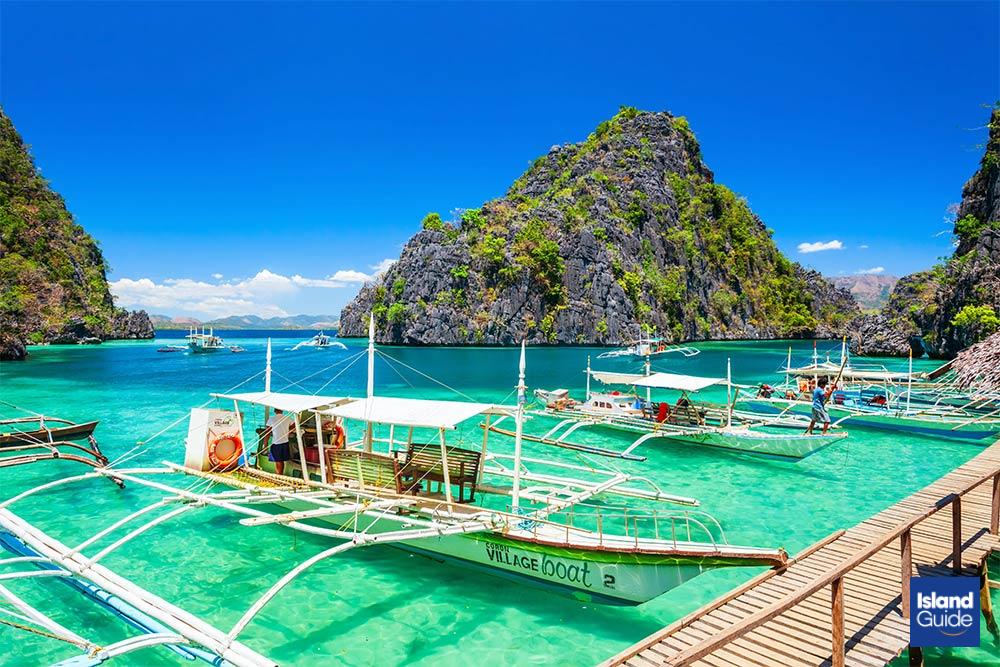
Palawan Island is not only renowned for its natural beauty but also for its cultural and ecological significance. The key factors that determine the island’s importance include:
Biological Diversity
Palawan stands out with its unique biological diversity. The island offers an enriched ecosystem with endemic plant and animal species, making it a valuable area for scientific research and conservation.
UNESCO World Heritage
Tubbataha Reef is an area in Palawan listed on the UNESCO World Heritage List. The reef is unique in terms of coral reefs and marine biology. This protected area is a symbol of sustainable tourism and conservation efforts.
Tourism Paradise
Palawan is a destination that attracts tourists worldwide. The magnificent lagoons of El Nido, the underground rivers of Puerto Princesa, and the sunken warships in Coron are significant attractions that enhance the island’s tourism potential.
Cultural Richness
Palawan is a geographical region where various ethnic groups coexist. This diversity contributes to the island’s rich cultural heritage. Local traditions, crafts, and festivals underscore the cultural significance of Palawan.
Ecotourism and Sustainability
Palawan is a pioneer in ecotourism and sustainable tourism. The preservation of natural resources, community involvement, and commitment to environmental sustainability principles ensure the island’s sustainability as a significant tourist destination.
Palawan Island goes beyond being just a tourist destination; it holds global importance due to its natural resources and cultural heritage. Biological diversity, UNESCO World Heritage, tourism potential, and sustainability efforts all highlight the comprehensive significance of Palawan.
Cultural Richness: The Colorful Cultural Fabric of Palawan Island
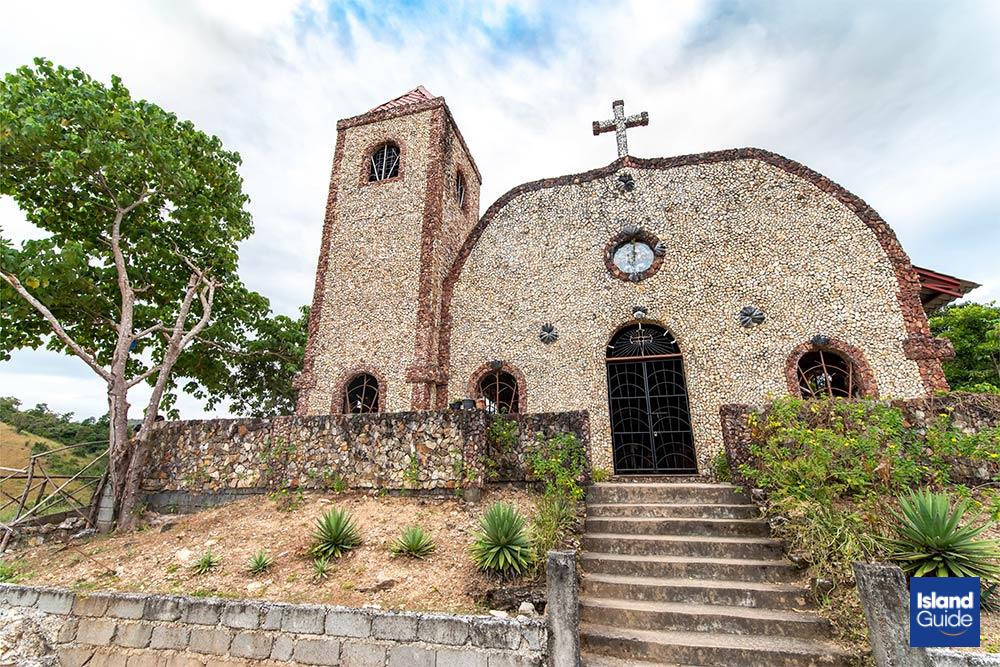
Palawan Island stands out not only for its natural beauty but also for its colorful cultural heritage, where diverse ethnic groups coexist. Some important elements that define the cultural richness of the island include:
Ethnic Diversity: Palawan is a mosaic of various ethnic groups such as the Tagbanua, Batak, Palawano, and many more. Each group contributes to the island’s rich cultural fabric with its own traditions, language, and cultural practices.
Traditional Celebrations: Various festivals and traditional events held throughout the year reflect the cultural vibrancy of Palawan. Dances, music, crafts, and traditional rituals showcase the efforts of the local people to preserve their cultural heritage.
Arts and Handicrafts: Palaweños are skilled in traditional arts and craftsmanship. Traditional crafts such as weaving, woodcarving, beadwork, among others, serve as both a livelihood for the local population and a form of cultural expression.
Religious and Spiritual Practices: Diversity is observed in religious and spiritual practices among different ethnic groups. Communities adhering to various religions such as animist beliefs, Christianity, and Islam celebrate their own religious festivals and rituals.
Local Cuisine: Palawan’s cuisine is influenced by the use of local ingredients and the unique cuisines of ethnic groups. Traditional dishes prepared with seafood, tropical fruits, and local plants reflect the island’s delicious cultural heritage.
Palawan Island hosts a rich cultural heritage that includes ethnic diversity, traditional festivities, handicrafts, and local culinary culture. This cultural diversity makes the island not only a tourist destination but also a center of attraction that promotes intercultural interaction and understanding.
Conclusion: The Jewel of Nature and Cultural Paradise
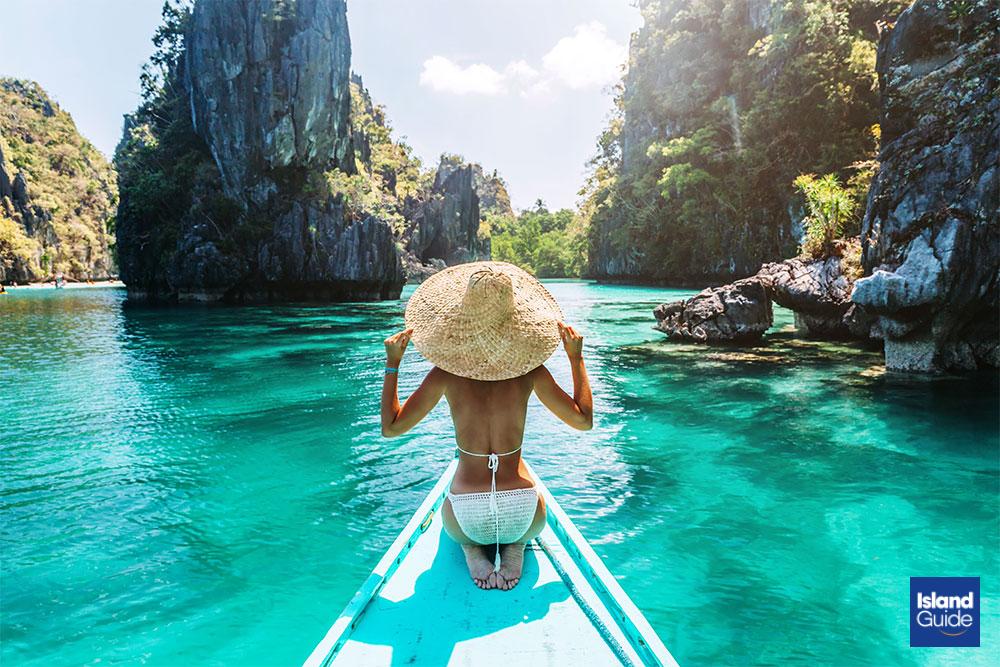
Palawan Island: A Paradise Enchanting with Natural Beauty, Rich History, and Diverse Cultures. Throughout this article, we have explored various aspects of Palawan, including its geographical location, transportation options, history, natural beauty, and cultural richness. Now, let’s take a look at the significance of Palawan, along with a summary and conclusion of this magnificent island.
In Summary, Palawan Island:
- Palawan is located in the west of the Philippines and is renowned for its natural beauty. Natural wonders like the lagoons of El Nido, the underground rivers of Puerto Princesa, and the Tubbataha Reef create the island’s unique beauty.
- In terms of transportation, Palawan can be reached by air and sea. Puerto Princesa Airport serves as the gateway to the island, and internal flights and ferries provide access to other tourist areas.
- Historically, Palawan has witnessed various events from the Spanish colonization period to World War II. The Tubbataha Reef, listed as a UNESCO World Heritage site, reflects the island’s natural heritage.
- Palawan’s cultural richness is evident through its ethnic diversity, traditional events, handicrafts, and local cuisine. This cultural heritage enhances the island’s tourist appeal and preserves the identities of local communities.
- Palawan stands out with key elements such as biological diversity, UNESCO World Heritage status, tourism potential, and sustainability efforts. This island, where nature and culture intertwine, holds global value.
- Efforts in ecotourism and sustainable tourism aim to protect the island’s natural resources and contribute to the economic development of local communities.
Frequently Asked Questions (FAQ)
Palawan Island is situated in the western part of the Philippines, along the northern coast of the Philippine Sea.
Tourist regions such as the natural lagoons of El Nido, the underground rivers of Puerto Princesa, and the sunken warships in Coron are among the most attractive spots on the island.
“Palawan offers a range of accommodation options, including luxury resorts, boutique hotels, guesthouses, and local lodging choices. You can choose from various options depending on your accommodation preferences.”
Palawan is typically considered best to visit between December and April. During this period, sunny and dry weather conditions are generally prevalent.
Diving is a popular activity on the island. Additionally, nature hikes are a great way to explore the unique flora and natural beauty of the island. It is also recommended to participate in festivals to experience the local culture.



